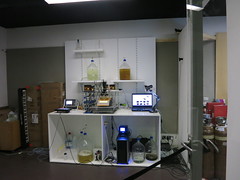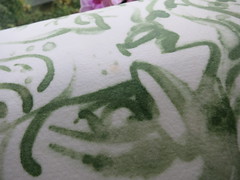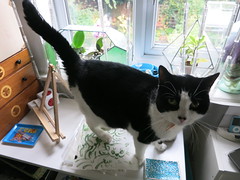In the main hall of the Tate, bacterial cultures are deciding when the sculpture environment in the Turbne Hall shudders into life.


The usual lounging masses are on the concrete parkway, marked with the pocks and cracks of previous art. The children like the sudden lurches of movement. We take a peer behind the curtain; the door to the control room is deliberately left open, perhaps to silence those who would claim a human orchestra or artist. There's no reason why it should be faked, though. Why not use growth as the trigger mechanism? Anything that produces a large enough signal to be detected can be converted into art.
We head into the new switch house, crouched like a confused origami animal in the shadow of the glass towers of the billionaire fishtank flat complex behind. The spaces between the bricks are the exact size that a pigeon can't fit into, somebody tells us. This disappoints me; there should be space for life even in the white fridges we build to preserve our art from the wrong kind of culture.


Of course we go and goggle off the platform in the general direction of the fancy flats. For the domiciles themselves, it's a weird combination of supplication and a sweet-shop window; the tail of an expensive cat visible here; an expanse of shiny worktop, a tastefully fancy lamp. One imagines aspirational brands bribing residents to place their products in the overlooked windows, more money draining into the smart cupboards of the extraordinarily well-off.


But on the top floor, as I hoped, an atrium garden is visible. Planters full of cordylines and other drought-resistant plants, a garden under glass. Traditionally, this is the architect's penthouse, and home to mad ideas like orchards, olive groves and lawns. This one seems quite modest and disappointingly tasteful by comparison with the tales we hear of penthouse excess.
It also looks completely sealed, in the modern style; a bottle garden for the doomed megalopolis.




























